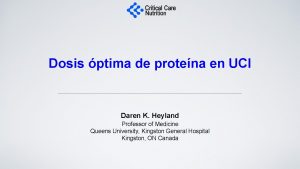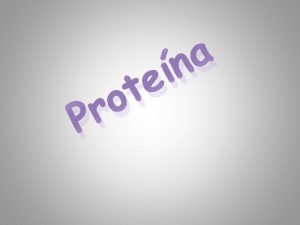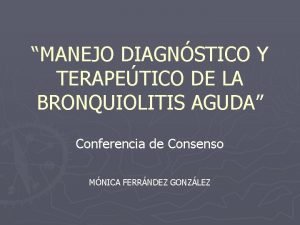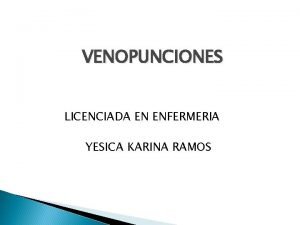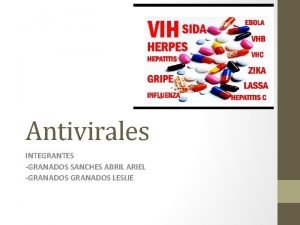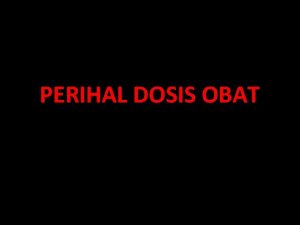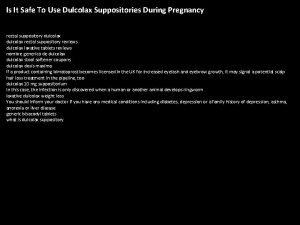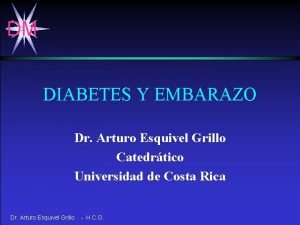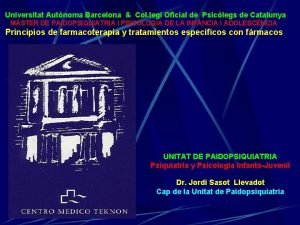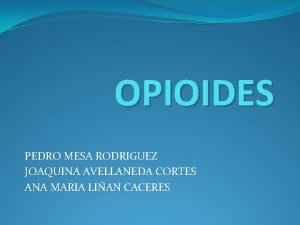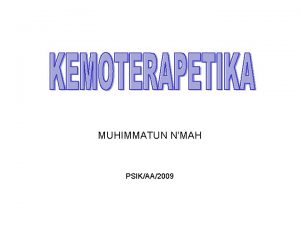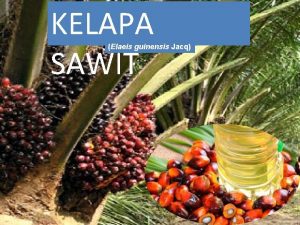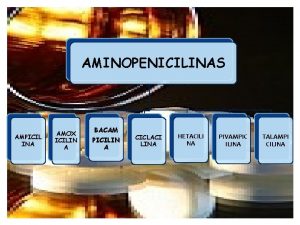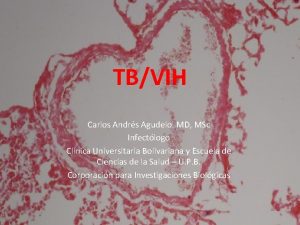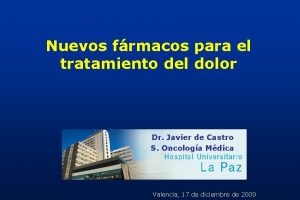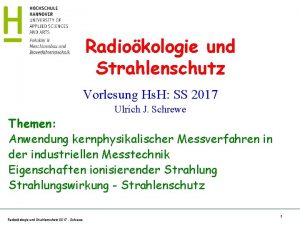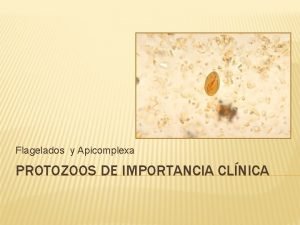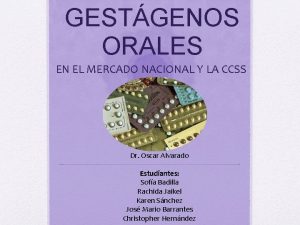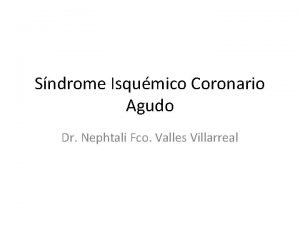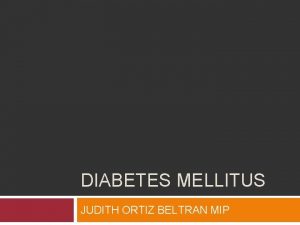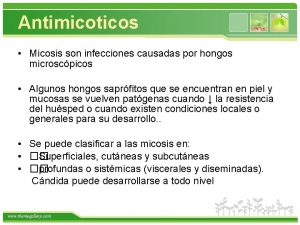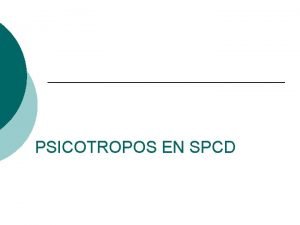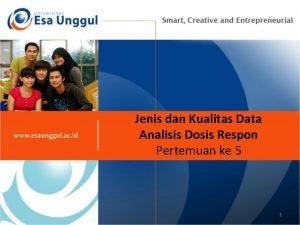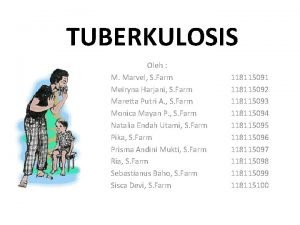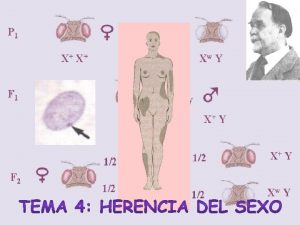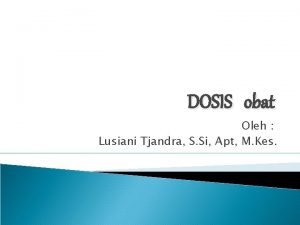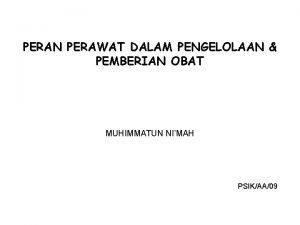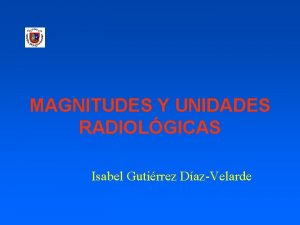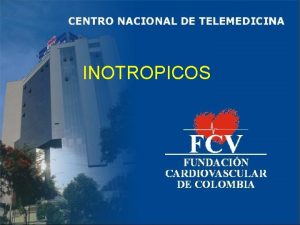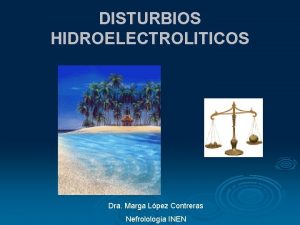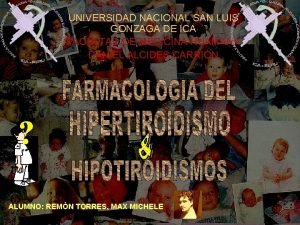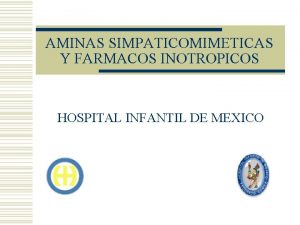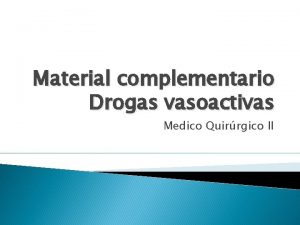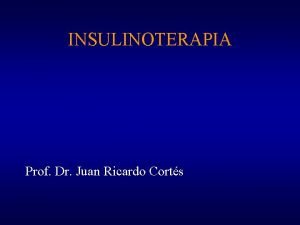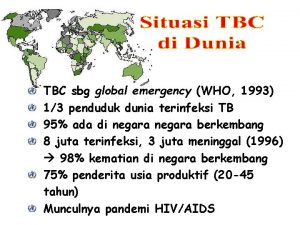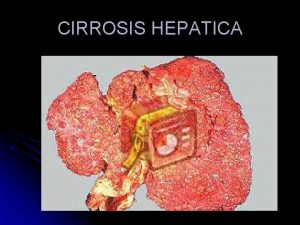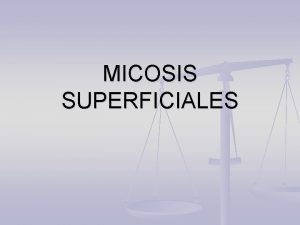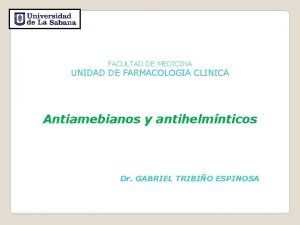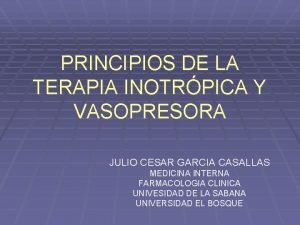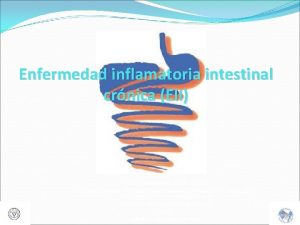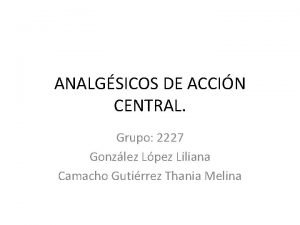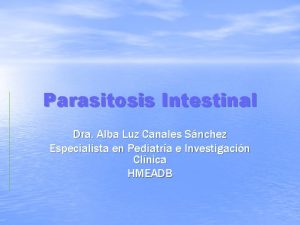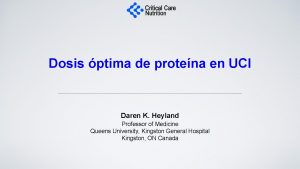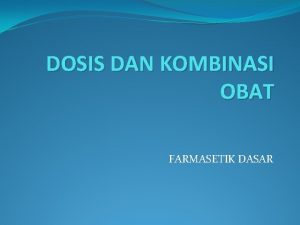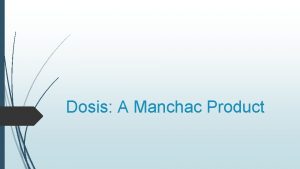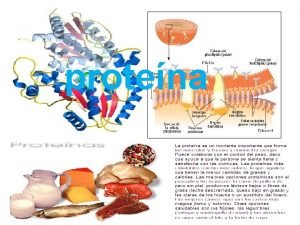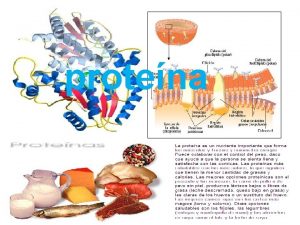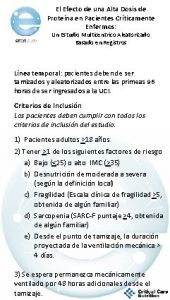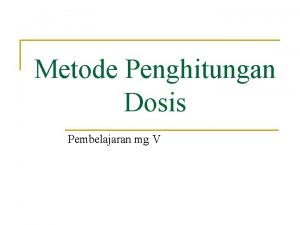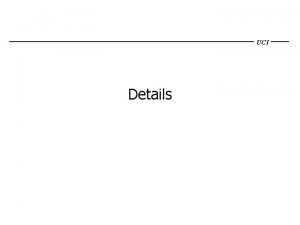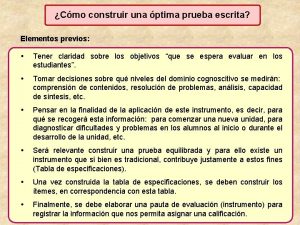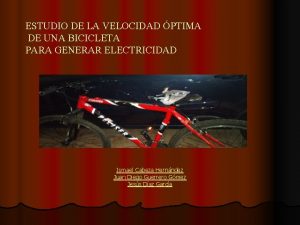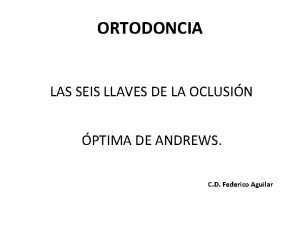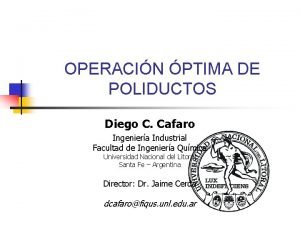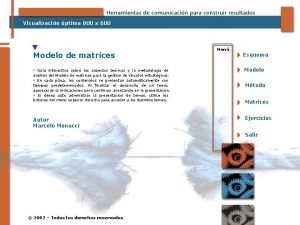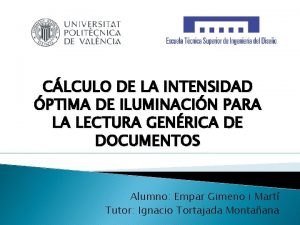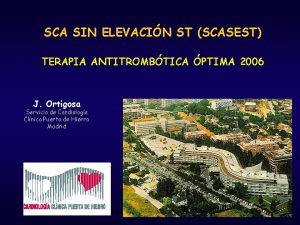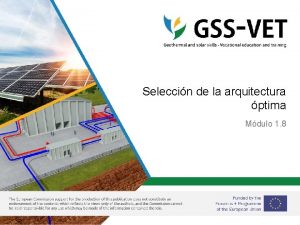Dosis ptima de protena en UCI Daren K

















































- Slides: 49

Dosis óptima de proteína en UCI Daren K. Heyland Professor of Medicine Queens University, Kingston General Hospital Kingston, ON Canada

The Effect of Higher Protein Dosing in Critically Ill Patients: The EFFORT Trial Target >2. 2 gram/kg/day 4000 ICU patients Fed enterally R Stratified by: Site BMI Med vs Surg Primary Outcome 60 day mortality Target <1. 2 gram/kg/day A multicentre, pragmatic, volunteer-driven, registrybased, randomized, clinical trial. 60 enrolled to date!

Several Negative Large Scale RCTs in Critical Care Nutrition NEJM 2011 • EPa. NIC • EDEN JAMA 2012 • PERMIT NEJM 2015 • NEPHROPROTECT ICM 2015 • EAT-ICU ICM 2017 3

Note: Wide range of acceptability and Low quality of evidence!


What dose do you routinely prescribe to the ‘average’ ICU patient? a. < 1. 0 gram/kg/d b. 1. 1 – 1. 5 gram/kg/d 1. 6 – 2. 0 gram/kg/d d. > 2. 1 gram/kg/d c.

Results of 2014 INS In 2014 INS, on average, patients were prescribed 1. 3 grams/kg/day (interquartile range, 1. 0 -1. 5 grams/kg/day, overall range, 0. 5 -3. 8 grams/kg/day).

Optimal Protein Dose? Could they benefit from more?

What happens to exogenously administered amino acid? 60 20 Phenylalanine oxidation (µmol/kg/day) WB Protein net balance (µmol/kg/day) 30 10 0 -10 R 2 = 0. 408 -20 -30 -40 50 40 R 2 = 0. 0005 30 20 10 0 0. 5 1. 0 1. 5 Total AA intake (g/kg/day) 2. 0 2. 5 0. 0 0. 5 1. 0 1. 5 2. 0 2. 5 Total AA intake (g/kg/day) Olav Rooyakers CC. icu-metabolism. se

Effect on Nitrogen Balance? 249 trauma patients receiving nutrition support Dickerson J Trauma Acute Care Surg 2012

What is the evidence that exogenously administered amino acids/protein favorably impacts muscle mass and function? • RCT of 119 ICU patients requiring PN • Randomized to 0. 8 gram/kg/day vs. 1. 2 grams/kg/day IV aa Ferrie JPEN 2016

What is the evidence that exogenously administered amino acids/protein favorably impacts muscle mass and function? No impact on LOS or mortality Ferrie JPEN 2016

Impact on Clinical Outcomes: RCT Level of Evidence? The Nephroprotect Study • RCT short-term daily IV aa on kidney function in critical illness, compared to standard care. • Unblinded • All patients expected to remain 48 hrs; excluded patients with AKI • Max protein intake total of 2. 0 gm/kg/day (IBW) • More patient in Intervention group with: • Higher APACHE II severity of illness scores (20. 2 ± 6. 8 vs. 21. 7 ± 7. 6, P = 0. 02) • pre-existing renal dysfunction (29/235 vs. 44/239, P = 0. 07) Doig Int Care Med 2015

The Nephroprotect Study Doig Int Care Med 2015

The Nephroprotect Study P=0. 004 • No difference in any other renal or clinical outcome • No impact on survival or HRQOL Doig Int Care Med 2015

Systematic Review of RCTs of High vs. Low Dose Protein

What is the evidence that exogenously administered amino acids/protein favorably impacts clinical outcomes?

Impact of Protein Intake on 60 -day Mortality Data from 2828 patients from 2013 International Nutrition Survey Variable Patients in ICU ≥ 4 d 60 -Day Mortality, Odds Ratio (95% CI) Protein Intake (Delivery > 80% of prescribed vs. < 80%) Energy Intake (Delivery > 80% vs. < 80% of Prescribed) Adjusted¹ Adjusted² 0. 61 (0. 47, 0. 818) 0. 66 (0. 50, 0. 88) 0. 71 (0. 56, 0. 89) 0. 88 (0. 70, 1. 11) ¹ Adjusted for BMI, Gender, Admission Type, Age, Evaluable Days, APACHE II Score, SOFA Score ² Adjusted for all in model 1 plus for calories and protein Nicolo JPEN 2015

Rate of Mortality Relative to Adequacy of Protein and Energy Intake Delivered Current practice Minimally 0. 7 gm/kg acceptable 1. 2 gm/kg Ideal practice? >1. 5 gm/kg Heyland JPEN 2015

Post-hoc analysis of EPANIC Protein is the bad guy!! Indication bias: 1) patients with longer projected stay would have been fed more aggressively; hence more protein/calories is associated with longer lengths of stay. 2) 90% of these patients are elective surgery. There would have been little effort to feed them and they would have categorically different outcomes than the longer stay patients in which their were efforts to feed 3) PN didn’t start till day 3, so all the signal was from small amounts of EN? Casaer Am J Respir Crit Care Med 2013; 187: 247– 255

JAMA Published online Oct 9, 2013

• “In a multivariable linear analysis, change in rectus femoris CSA was positively associated with the degree of organ failure, CRP level and amount of protein delivered” JAMA Published online Oct 9, 2013

• 78 patient with ALI randomized to Intensive Medical therapy (30 kcal/kg/day) or usual care (40 -60% of target) Stopped early because of excess deaths in intensive group • Post hoc analysis suggests increased death from early protein! •

RCTs do not suggest any evidence of treatment effect and observational studies suggest increased protein intake associated with… • Reduced mortality 1 • Increased mortality 2 • Quicker Time-todischarge-alive 1 • Slower time-to-dischargealive from ICU 3 • Greater loss of muscle mass 4 • Greater preservation of muscle • Reduced infection 1 Nicolo JPEN 2015 2 Braunschweig Am J Clin Nutr 2017 3 Casaer Am J Respir Crit Care Med 2013 4 Puthucheary JAMA 2013

Clinical uncertainty or equipoise exists regarding the best dose for the average critically ill patient! a. Totally Agree b. Agree Neutral d. Disagree e. Totally Disagree f. Don’t know c.

ICU Patients Are Not All Created Equal… Should We Expect the Impact of Nutrition Therapy to be the Same Across All Patients?

Overall Hypothesis • Compared to the receiving lower dose of prescribed protein, the prescription of a higher dose of protein/amino acids to nutritionally high-risk critically ill patients will be associated with greater amount of protein delivered and result in improved survival and a quicker rate of recovery.


The Effect of Higher Protein Dosing in Critically Ill Patients: The EFFORT Trial Target >2. 2 gram/kg/day 4000 ICU patients Fed enterally R Stratified by: Site BMI Med vs Surg Primary Outcome 60 day mortality Target <1. 2 gram/kg/day A multicentre, pragmatic, volunteer-driven, registrybased, randomized, clinical trial.

• Clinical registries are established tools for auditing clinical standards and benchmarking QI initiatives • Data from clinical registries can be used to formulate hypothesis • With appropriate methods, make causal inferences (albeit weaker inference) • Results more generalizable NEJM 369; 17: 1579

• Randomized patients undergoing angioplasty to manual thrombus aspiration or usual care. • Used existing national cardiac registries • Over 7000 patients were efficiently recruited from the registry to evaluate the study question and aside from the randomized intervention, the trial imposed no other study procedures and all data were collected by existing registries supported by funds from national or other hospital sources. • Total incremental cost 300, 000 Euros; 50 Euros/patient enrolled! Am Heart J 2010: 160: 1042 and NEJM 2013; 369: 1587

Registry-based Randomized Clinical Trials (RRCT) A possible solution? • Recent experience with large scale, multi-center, observational studies conducted by volunteers in hundreds of ICUs around the world opens the possibility of using the same International Nutrition Survey (INS) infrastructure to support large scale, randomized trials. The creation of registry-based, volunteer supported, large-scale, randomized clinical trials related to critical care clinical nutrition

Participation Across the 5 Years of the Survey : 708 Distinct ICUs Canada: 95 Europe and Africa: 109 USA: 225 Asia: 145 Colombia: 19 Brazil: 10 Argentina: 7 Uruguay: 5 Mexico: 3 Chile: 3 Venezuela: 2 Peru: 1 Paraguay: 1 El Salvador: 1 Puerto Rico: 1 Latin America: 53 UK: 37 Turkey: 11 Ireland: 12 Italy: 9 Norway: 8 South Africa: 13 Switzerland: 4 Spain: 4 Slovenia: 1 Sweden: 3 Czech Republic: 3 Austria: 2 Portugal: 1 France: 1 China: 38 Japan: 43 India: 36 Taiwan: 5 Singapore: 11 Saudi Arabia: 2 Philippines: 2 Iran : 2 Thailand: 2 UAE: 1 Malaysia: 2 Indonesia: 1 Australia: 73 New Zealand: 8

Value of Bench-marked Site Reports Recommendations: Based on 8 level 2 studies, we recommend early enteral nutrition (within 24 -48 hrs following resuscitation) in critically ill patients. Early vs Delayed Nutrition Intake

Intervention • Eligible patients will be randomized to one of 2 groups: • High dose group: Patients will be prescribed >2. 2 g/kg/day • Low dose group: Patients will be prescribed <1. 2 g/kg/day • BOTH groups • Use dry pre-ICU body weight • Use IBW based on a BMI of 25, if BMI >30 • Achieve goals through any combination of enteral and parental sources (as needed). • The only difference between the 2 groups are the protein targets that are set. • Success defined as achieving at least 80% of protein targets

What is the effect of prescribing a higher dose (>2. 2 grams/kg/day) of protein/amino acid administration compared to a low group prescribed <1. 2 gram/kg/day on 60 day mortality? Is there enough uncertainty that practitioners will be comfortable with their patients being randomized to ‘low dose’ group? to the high group? if not, don’t enroll!


Protein intake is most important in patients with high nutritional risk. What tools to evaluate nutritional risk have been validated in critically ill patients? a. Subjective Global Assessment b. NRS-2002 NUTRIC Score d. None of the above c.

Study Population Inclusion Criteria Exclusion Criteria Rationale for Exclusion 1. >96 continuous hours of mechanical ventilation before screening Intervention is likely most effective when delivered early 3. Pregnant Unknown effects on fetus 1. >18 years old 2. Nutritionally “high-risk” 2. Expected death or withdrawal Patients unlikely to receive (meeting one of the below criteria) of life-sustaining treatments within benefit a. Low (<25) or High BMI (>35) b. Moderate to severe malnutrition (as 7 days from screening defined by local assessments) c. Frailty (Clinical Frailty Scale, 5 or more from proxy) d. Sarcopenia – (SARC-F score of 4 or more from proxy) e. From point of screening, projected duration of mechanical ventilation >4 days) 4. The responsible clinician feels that the patient either needs low or high protein 3. Requiring mechanical 5. Patient requires parenteral ventilation with actual or expected nutrition only and site does not total duration of mechanical have products to reach the high ventilation >48 hours protein dose group. Uncertainty doesn’t exist; patient safety issues Site will be unable to reach high protein dose prescription.

Subgroup Analyses • • • Age (based on median) Severity of illness (based on median APACHE II) Case Mix • • Sepsis Burns Trauma AKI and/or RRT at baseline Malnutrition risk factors, both individually and combinations Wounds Others?

Data Collection (Similar to INS in the past only less data) • Patient demographics • • Age, Sex, comorbidities Admission type and diagnosis APACHE II, SOFA Nutritional Assessment • • • Weight, height Malnutrition, frailty, SARC-F Goals • Nutrition Processes of Care • • Timing and use of EN, PN, supplements, propofol (not IV glucose) • Adequacy of protein and energy Labs Glucose, renal function, phosphate •

Outcomes • Limited outcomes collected in INS • • • Nutritional adequacy Persistent Organ Dysfunction PODS) • Use of vasopressors, RRT, ventilation Duration of mechanical ventilation Duration of ICU and Hospital stay Hospital mortality 60 -day mortality Readmissions to ICU and Hospital within 60 days of enrollment Discharge status Time to discharge alive from hospital Addition of performance-based measures via sub-studies? • • Hand grip strength? 6 MWD? 4 ms? Questionnaires asking ADLs/QOL at 3 and/or 6 months?

Statistical Considerations • Large pragmatic trial with little effort to restrict participation of sites and patients nor standardize co-interventions will increase noise • Aim to have power to detect smaller treatment effects which will increase sample size requirements • Need 4000 patients! • Final analysis will be intention-to-treat

Ethical Issues • Obtaining informed consent will also be a barrier. • Waiver of informed consent possible? (Yes, for 2 sites in the USA so far) • Minimal Risk? • Has been so far for INS (de-identifiable data) • Addition of randomization factor for usual care interventions does not change the risk and require informed consent (IMHO) • Impractical? • Without funding, would be impractical to use research resources to consent families (we are relying on clinicians volunteering on their own time to recruit eligible patients). • Plan to work with some sites to ‘test the waters’ to see if we can get a waiver and just provide information letter to families/SDM • If not, have ICF ready to go but puts extra burden on the site.

Setting • • ICUs from around the world will voluntarily participate and be screened for suitability. What will be our criteria for suitability? • Participants must be knowledgeable about critical care nutrition (submit their CV or other documentation); • Have Good Clinical Practice (or similar) training (submit their training certificate); • Confirm their site has overall equipoise and is willing to abide by the randomization schema and not overfeed patients; • Confirm they use some form of a standardized feeding protocol (specific nature of the protocol not important); • Confirm they have access to a range of commercial products (high protein enteral nutrition, protein supplements, and parenteral nutrition or amino acids); • Have obtained ethics approval. • Provide an electronic signature that they will be committed to enrolling a minimum of 30 eligible patients in 2 -3 years.

Site Registration Process


Come to EFFORT trial meeting Tuesday, 12: 45 -2: 15 Room Auditorium For more information See www. criticalcarenutrition. com or contact: Daren Heyland dkh 2@queensu. ca

I see no reason to change practice at the moment… …but we need more data! Join the EFFORT!
 Pillar of basel ii
Pillar of basel ii Ptima
Ptima Protena
Protena Protena sariñena
Protena sariñena Dosis palivizumab
Dosis palivizumab Gambar wadah tertutup baik
Gambar wadah tertutup baik Canalizar venas
Canalizar venas Antivirales
Antivirales Pemberian obat oral
Pemberian obat oral Dulcolax suppository coupons
Dulcolax suppository coupons Esquema de insulina rapida
Esquema de insulina rapida Medikinet dosis por peso
Medikinet dosis por peso Dolantina escalon analgesico
Dolantina escalon analgesico Dosis obat tb
Dosis obat tb Jarak tanaman kelapa sawit
Jarak tanaman kelapa sawit Ampicilina dosis adulto
Ampicilina dosis adulto Tabla dosis pediátricas
Tabla dosis pediátricas Valaciclovir dosis
Valaciclovir dosis Dosis de hidromorfona
Dosis de hidromorfona Sistem unit dosis adalah
Sistem unit dosis adalah Dosis-wirkungs-beziehung
Dosis-wirkungs-beziehung Trichomonas vaginalis ciclo de vida
Trichomonas vaginalis ciclo de vida Norgyl ccss
Norgyl ccss Tenecteplase dosis
Tenecteplase dosis Neuroglucopenia
Neuroglucopenia ácido undecilénico mecanismo de acción
ácido undecilénico mecanismo de acción Fluoxetina efectos secundarios
Fluoxetina efectos secundarios Analisis dosis respon adalah
Analisis dosis respon adalah Dosis obat tb anak
Dosis obat tb anak Sexo
Sexo Boorzalf
Boorzalf Rumus surface area
Rumus surface area Dosis equivalente
Dosis equivalente Dopamina dosis infusion
Dopamina dosis infusion Tratamiento con calcitonina
Tratamiento con calcitonina Aminofilina dosis
Aminofilina dosis Cuales son las aminas medicamentos
Cuales son las aminas medicamentos Noradrenalina dosis infusion
Noradrenalina dosis infusion Tabla de insulinas pdf
Tabla de insulinas pdf Kategori tb
Kategori tb Furosemida dosis adultos
Furosemida dosis adultos Superficie corporal
Superficie corporal Grados de encefalopatia hepatica
Grados de encefalopatia hepatica Signo del uñazo
Signo del uñazo Metronidazol dosis
Metronidazol dosis Norepinefrina dosis
Norepinefrina dosis Inmunosupresor
Inmunosupresor Rumus clark dosis
Rumus clark dosis Opiide
Opiide Hemynolepis nana
Hemynolepis nana

